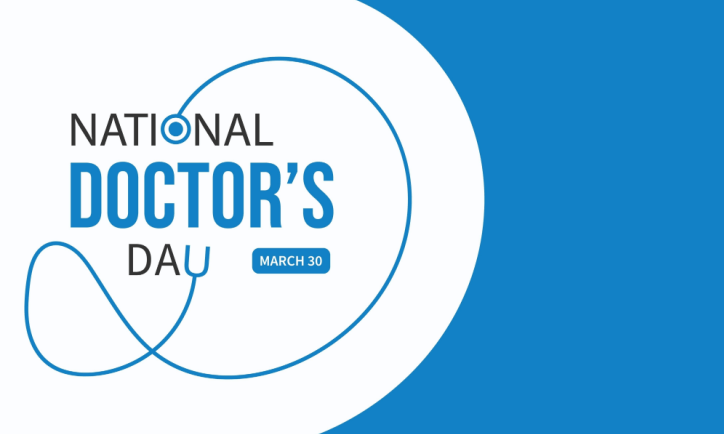
Every year on March 30th, we celebrate and recognize the contributions of physicians across the country. In every city, clinic, and hospital, their dedication to serving individuals and the community makes a significant impact on our society.
Without the physicians we work closely with, we wouldn’t be able to do what we do. At Profound Medical, our physicians are responsible for determining their patient’s eligibility for the TULSA Procedure, defining and delivering customized plans, and reviewing MRI images to confirm a successful process.
The TULSA Procedure, a revolutionary prostate treatment, would not exist without innovative doctors and their drive to continuously improve healthcare.
A Timeline of the First Prostate Treatments
When the first case of prostate cancer was discovered in 1853 by London surgeon J. Adams, it was considered a very rare disease. Soon after, significant discoveries were made in the late 1800s and 1900s, paving the way for prostate treatments today.
A brief history of prostate treatments
- 1904 – Dr. Hugh H. Young performed the first operation to surgically remove a man’s prostate gland, called a prostatectomy, at Johns Hopkins Hospital.
- 1913 – Directly implanting radium into the prostate to treat cancer was introduced.
- 1945 – Terrence Millin introduced a retropubic approach for prostate enucleation, a surgery where the incision is made on top of the prostate and the enlarged portion is removed.
- 1962 – Doctors began using megavoltage radiation for men whose cancer had not spread beyond the prostate gland.
- 1960s-1980s: Doctors began using hormone therapy, also called androgen deprivation therapy, a treatment that blocks or suppresses the production or action of male hormones, called androgens, to stop them from fuelling prostate cancer growth.
- 1997 – A combination of radiation and hormone therapy to treat prostate conditions became a standard procedure.
Prostate cancer research pioneers
After the first case of prostate cancer was discovered, doctors across the country pioneered the research of the disease and the discovery of various treatments.
- Dr. Charles Huggins – Discovered that metastatic prostate cancers respond to androgen therapy.
- Dr. Andrew Schally – Developed the means to synthesize the structure of luteinizing hormone-releasing hormones, which in men play a role in causing the testicles to make testosterone.
- Dr. Patrick Walsh – Developed a nerve-sparing surgical technique for radical retropubic prostatectomy, at Johns Hopkins Hospital.
- Dr. Malcolm Bagshaw – Investigated the possibility of radiation therapy to treat prostate cancer.
- Dr. Gerald Murphy – Created a program to evaluate the efficacy of chemotherapy in patients with hormone-refractory prostate cancer. His lab discovered prostate-specific antigen (PSA), a protein produced in the ducts of the prostate.
How prostate treatments have evolved
Today, prostate cancer is the most commonly diagnosed cancer in American men, other than skin cancer. With the rise of prostate cancer and non-cancerous prostate conditions, prostate treatments have evolved, and researchers continue to discover advancements to improve the treatment process.
Since the development of prostate treatments, men typically had two options to manage localized prostate cancer and non-cancerous prostate conditions:
- Active surveillance – Low-risk patients undergo regular medical tests to determine whether their condition is getting worse.
- Radiation or surgery – Although effective at eradicating localized prostate cancer and non-cancerous conditions, radiation and surgery each carry a high risk of life-altering side effects such as urinary incontinence and erectile dysfunction.
Today, men have access to modern focal therapy options for prostate treatments, which offer a middle-ground that minimizes the risk of side effects and treats a defined prostate region, leaving other healthy prostate regions unaffected. This is somewhat analogous to breast cancer, where improvements in diagnostic imaging led to an evolution in surgical techniques from complete mastectomy (removal of the entire breast) to a lumpectomy (removal of only a portion of the breast).
The History of National Doctors’ Day
The origins of National Doctors’ Day go as far back as March 30th, 1842, when the first ester anesthetic for surgery was administered by Crawford W. Long, M.D. The first medical anesthesia was used on a man who received surgery to remove a tumor from his neck and proved to be successful.
Nearly a century later, the first Doctors’ Day was observed on March 30th, 1933, by Dr. Charles B. Almond’s wife, Eudora Brown Almond in Winder, Georgia, to honor physicians. Flowers were placed on the graves of late doctors – the red carnation, in particular, became a symbol for National Doctors’ Day.
On February 21st, 1991, President George H.W. Bush officially marked March 30th as National Doctors’ Day.
How to Observe National Doctors’ Day
Today, we recognize and honor the hard work, contribution, and dedication of our physicians across the country who selflessly give their time and commitment to help keep us and our loved ones healthy.
On National Doctors’ day, we encourage you to:
- Thank your physician for all that they do.
- Send flowers or treats to your clinic or hospital of your choice.
- Share a positive experience about a doctor across your social media and how they helped you navigate a stressful time.
- If you work in a hospital or clinic, talk to your team members about hosting a National Doctors’ Day luncheon and arrange for doctors to take an extra 10-minute break to de-stress.
From Profound Medical to all of the committed doctors nationwide, thank you! You are greatly appreciated!
Blog posts from Profound Medical are for general information only. The content should not be considered medical advice. If you are in need of professional medical advice or assistance, please reach out to your local doctor or clinic.
Mar 30, 2023 | Cole Parrish
 Find a Center
Find a Center Contact Us
Contact Us